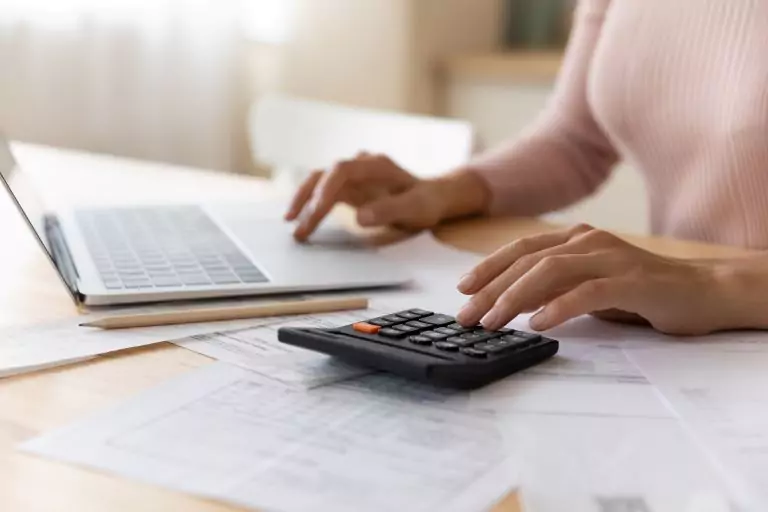If you’re struggling with student loan debt, you may qualify for federal student loan forgiveness programs. This guide will help you understand how to get your student loan forgiven, whether through Public Service Loan Forgiveness (PSLF), Income-Driven Repayment (IDR) plans, or other federal options.
What is Student Loan Forgiveness?
Student loan forgiveness programs allow eligible borrowers to have part or all of their student loans forgiven or discharged. Most programs focus on federal student loans, meaning private loans typically don’t qualify. If you’ve been paying on your loans for several years or working in a specific field like teaching or public service, you could be eligible to have your remaining loan balance wiped out.
What Are Federal Student Loans?
Federal student loans are loans funded by the U.S. Department of Education to help students pay for college or career school. Unlike private loans, federal loans offer borrower protections, such as flexible repayment options and loan forgiveness programs. These loans often have fixed interest rates and do not require a credit check.
Types of Federal Loans that Qualify for Forgiveness:
Direct Loans: Eligible for PSLF, IDR, and other forgiveness programs.
Perkins Loans: May qualify for cancellation in certain professions.
Federal Family Education Loans (FFEL): Must be consolidated into a Direct Loan to qualify.
PLUS Loans: Eligible for forgiveness under specific circumstances, such as PSLF.
Understanding the type of loan you have is key to determining eligibility for forgiveness programs.
For more details, visit Federal Student Aid.
Public Service Loan Forgiveness (PSLF)
One of the most popular forgiveness programs is PSLF, designed for those working in qualifying public service jobs. Under this program, after making 120 qualifying payments under a qualifying repayment plan while working full-time for a government or not-for-profit organization, your remaining student loan balance can be forgiven.
Eligibility: You must work in public service and make 120 qualifying payments under a qualifying Income-Driven Repayment (IDR) plan.
Loan Types: Only Direct Loans qualify for PSLF. If you have Federal Family Education Loans (FFEL) or Perkins Loans, consider consolidating them into a Direct Loan to qualify.
Teacher Loan Forgiveness
If you’re a teacher, you may qualify for the Teacher Loan Forgiveness Program. This program is available to those teaching full-time for five consecutive years in a low-income school or educational service agency.
Loan Types: Eligible loans include Direct Loans and Stafford Loans. Up to $17,500 of your loans can be forgiven depending on the subject you teach.
Check your eligibility for Teacher Loan Forgiveness here.
Income-Driven Repayment (IDR) Forgiveness
You might benefit from an IDR forgiveness plan if your income is low compared to your federal student loan debt. Under IDR plans, your monthly payment is capped at a percentage of your income. Your remaining balance is forgiven after 20 to 25 years of qualifying expenses.
Key Programs:
Income-Based Repayment (IBR)
Pay As You Earn (PAYE)
Revised Pay As You Earn (REPAYE)
The forgiven amount may be considered taxable income, so make sure to plan.

Borrower Defense to Repayment
If your school misled you or engaged in misconduct, you might qualify for loan forgiveness under the Borrower Defense to Repayment program. This program is designed to forgive federal student loans if your school violated state laws related to your loan or education.
Eligibility: Must prove that your school misled you or engaged in unlawful practices.
Loan Types: Applies to Direct Loans and may extend to other types after consolidation.
Perkins Loan Cancellation
If you took out Perkins Loans, you might be eligible for Perkins Loan cancellation. This option is available to those in public service roles, such as teachers, nurses, and law enforcement officers.
Discharge Due to Disability or Death
If you become totally and permanently disabled, you may qualify for a Total and Permanent Disability (TPD) discharge, which will forgive your federal student loans. Additionally, in the unfortunate event of a borrower’s death, their loans will be discharged.
Closed School Discharge
If your school closed while you were enrolled or soon after you withdrew, you may qualify for a closed school discharge. This program allows you to discharge 100% of your federal student loans.
3 Steps to Apply for Student Loan Forgiveness
To start the process of applying for student loan forgiveness:
Identify the program you’re eligible for (e.g., PSLF, IDR, Teacher Loan Forgiveness).
Check your loan type to ensure eligibility.
Submit the appropriate paperwork through your loan servicer or the official Federal Student Aid website.
What About Private Student Loans?
Unfortunately, private student loans don’t usually qualify for forgiveness programs. However, some lenders offer loan discharge options in rare cases, like permanent disability or death.
Frequently Asked Questions (FAQ)
Does Student Loan Forgiveness Affect My Credit Score?
No, obtaining student loan forgiveness does not directly impact your credit score. Loan forgiveness programs are designed to help reduce or eliminate your debt without negatively affecting your credit history. However, it’s important to stay on top of your loan payments until your forgiveness application is approved to maintain a positive payment history. Missing payments before forgiveness could harm your credit score.
Am I Eligible for Multiple Student Loan Forgiveness Programs?
Yes, you can qualify for multiple forgiveness programs, but you cannot receive forgiveness from more than one program for the same loan at the same time. For example, if you have Public Service Loan Forgiveness (PSLF), you cannot also apply for Income-Driven Repayment (IDR) forgiveness on the same payments. It’s essential to carefully evaluate which program best fits your career and financial situation to maximize your benefits.
How Long Does It Take to Receive Student Loan Forgiveness?
The timeline for receiving student loan forgiveness varies depending on the program:
Public Service Loan Forgiveness (PSLF): Typically takes at least 10 years of qualifying payments (120 payments) while working in a qualifying public service job.
Income-Driven Repayment (IDR) Forgiveness: Generally takes 20 to 25 years of qualifying payments based on your specific IDR plan.
Teacher Loan Forgiveness: Can take up to 5 years of full-time teaching in a qualifying school to receive forgiveness.
Processing times can also be affected by the volume of applications and the efficiency of your loan servicer. It’s important to keep detailed records and regularly check the status of your application to ensure a smooth process.

Take The First Step Towards Loan Forgiveness
Don’t wait to start working toward student loan forgiveness. Whether through Public Service Loan Forgiveness, Income-Driven Repayment Plans, or Teacher Loan Forgiveness, there are options to help reduce or eliminate your student loan debt.
Start today by checking your loan type, exploring forgiveness programs, and speaking with your loan servicer.
For more information and to see which forgiveness program fits you, visit the Federal Student Aid site.
Find More Money to Help with Student Loans: FREE Cell Phone Service
Finally, consider enrolling in the EASY Wireless Lifeline program to ensure you have a reliable way to stay connected with the resources and support services you need.
Having a free cell phone and data service can make all the difference when it comes to searching for and applying for student debt relief.
Click to see if you’re eligible for FREE Cell Phone Service from EASY Wireless.


